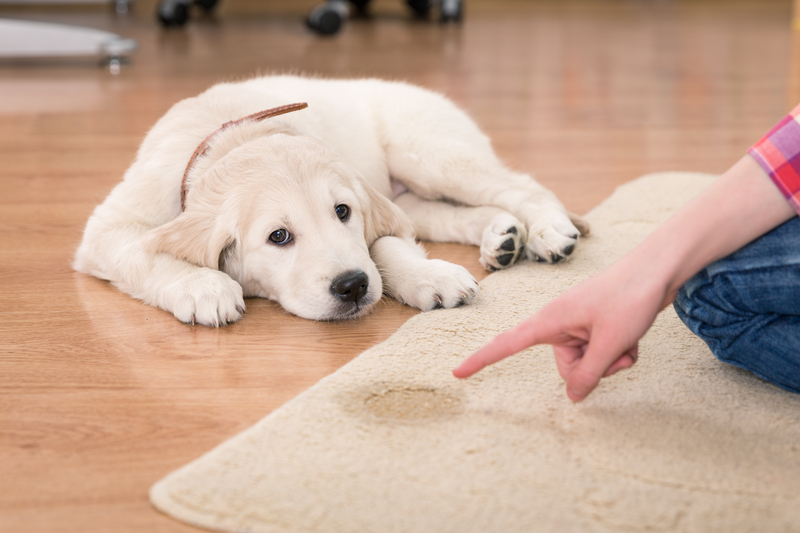Shine On: Advanced Jewelry Cleaning Tips
Posted on 01/07/2025
Shine On: Advanced Jewelry Cleaning Tips for Sparkling Results
Jewelry is more than an accessory; it's a statement, an investment, and sometimes even an heirloom. However, with time, even the most brilliant piece can lose its luster due to dust, oils, and everyday wear. Luckily, routine maintenance and advanced cleaning techniques can restore your jewelry's shine and preserve its brilliance for years to come. In this in-depth guide, you'll discover expert jewelry cleaning tips and innovative care strategies for all types of ornaments, from gold and silver to diamonds and delicate porous stones.

Why Proper Jewelry Cleaning Matters
Understanding the value of cleaning your jewelry is key to prolonging its life and maintaining its stunning appearance. Dirt and grime are more than just surface issues--they act as abrasives, speed up wear, and even weaken the settings that hold your gems in place. That's why advanced jewelry cleaning techniques are essential for anyone who wants their pieces to truly shine on.
- Restore natural brilliance: Regular cleaning removes dulling residues for a sparkling finish.
- Protect structural integrity: Cleaning helps prevent buildup that can loosen prongs and settings.
- Maintain value: Well-cared-for jewelry retains its worth and beauty over time.
- Spot issues early: Frequent inspections during cleaning can reveal needed repairs.
Understanding Different Jewelry Materials
Not all jewelry is created equal. Gold, silver, platinum, gemstones, and pearls each require unique cleaning methods. Using the right approach for each material ensures a safe and effective clean.
Gold Jewelry
Gold is durable but can be scratched by harsh abrasives. Avoid chlorine, which can weaken gold's structure, especially in lower karat gold.
Silver Jewelry
Silver tarnishes over time. Special silver polishes or advanced silver jewelry cleaning cloths are recommended for best results.
Platinum Jewelry
Platinum is more robust than gold or silver and resists tarnish. However, it can still develop a patina with frequent wear.
Gemstone Jewelry
Diamonds, sapphires, and rubies can handle more vigorous cleaning. Softer or porous stones like opal, turquoise, or pearls require gentle care.
Essential Tools for Advanced Jewelry Cleaning
Arming yourself with professional-grade tools makes shining your jewelry at home much easier. Consider investing in items beyond simple soap and water:
- Soft-bristled toothbrushes: Ideal for getting into crevices without scratching metals or stones.
- Ultrasonic jewelry cleaner: Uses high-frequency sound waves to dislodge stubborn dirt. Check stone compatibility before use.
- Jewelry steam cleaner: Blasts away grime with pressurized steam for a professional finish.
- Microfiber cloths: Lint-free and gentle--essential for drying and buffing jewelry without microfiber abrasions.
- Specialty cleaners: Choose solutions formulated for specific metals or stones--avoid harsh chemicals like bleach or ammonia unless suitable.
- Polishing cloths: Especially for silver, these cloths are embedded with special ingredients to remove tarnish.
Step-by-Step Advanced Jewelry Cleaning Techniques
Let's dive into advanced strategies that go beyond everyday jewelry cleaning and deliver professional-level sparkle at home.
1. Prep Your Workspace
- Lay out a soft towel to prevent scratching or detaching small stones if any become loose.
- Make sure you have your chosen cleaning solutions, tools, and a separate bowl of warm water.
- Good lighting helps spot dirty areas and loose settings.
2. Routine Diamond and Gemstone Cleaning
Diamonds and hard gems respond well to advanced cleaning:
- Mix a drop of mild dish soap in a bowl of warm (not hot) water.
- Let the jewelry soak for 10-20 minutes to loosen oils and dirt.
- Using a soft-bristled brush, gently scrub around the settings and under the stones.
- Rinse under lukewarm water, holding the jewelry securely over a strainer or bowl.
- Pat dry with a lint-free cloth, then buff gently to restore shine.
3. Ultrasonic Cleaning (For Select Pieces)
- Ultrasonic cleaners provide a deep clean but are not safe for all jewelry. Never use with pearls, opals, emeralds, or vintage pieces.
- Place the appropriate items--like diamond rings or hard gemstones--in the cleaner per manufacturer instructions.
- After the cycle, inspect for loose stones, rinse thoroughly, and dry.
4. Silver Jewelry: Banishing Tarnish Like a Pro
Advanced silver jewelry cleaning tips involve chemistry to lift tarnish:
- Line a bowl with aluminum foil, shiny side up.
- Mix one cup hot water, one tablespoon baking soda, and one tablespoon salt.
- Place silver pieces on the foil and pour the solution over them.
- Let sit for up to 5 minutes; tarnish will transfer onto the foil.
- Rinse, dry, and finish with a specialty silver polishing cloth.
5. Cleaning Gold Jewelry
Gold jewelry can be treated with special care for extra radiance:
- Soak in a mixture of warm water and mild detergent (no bleach or harsh chemicals).
- Use a soft brush to clean intricate areas and chains.
- Rinse thoroughly and pat dry--avoid paper towels.
- Buff with a clean microfiber cloth to restore brilliance.
6. Caring for Pearls and Porous Stones
Pearls, malachite, turquoise, and similar stones need the gentlest cleaning.
- Never use soaks or ultrasonic cleaners.
- Wipe gently with a damp, soft cloth after each wear.
- If necessary, use a very diluted solution of mild soap and water. Dip the cloth in the solution (never submerge the pearl).
- Allow the item to air dry flat--never hang, as stringing can stretch.
Advanced Pro Tips for Exceptional Jewelry Maintenance
To keep your collection shining on longer, implement these expert tricks:
- Store pieces separately: Prevent scratches and tangles by using lined jewelry boxes or pouches for each item.
- No jewelry during chores: Remove jewelry while cleaning, swimming, or gardening to avoid exposure to chemicals and impact.
- Address tarnish promptly: Early intervention makes cleanup much easier, especially on sterling silver.
- Regular professional cleanings: Have valuable or intricate pieces inspected and cleaned annually by a jeweler.
- Insure fine jewelry: Protection against loss and damage ensures your investment is safe.
- Check for loose settings: Gently shake jewelry near your ear--if you hear rattling, see a professional before wearing again.
- Limit exposure to beauty products: Put on perfume, hairspray, and lotions before wearing your jewelry to minimize residue buildup.
Natural and DIY Jewelry Cleaning Solutions
If you prefer chemical-free cleaning, certain DIY methods offer gentle, effective alternatives:
Baking Soda Paste for Silver
Make a paste with baking soda and water, then gently rub onto tarnished silver using a microfiber cloth. Rinse and dry.
Vinegar Soak for Gold and Diamond Jewelry
Soak gold or diamond jewelry in a mixture of white vinegar and water for a few minutes, then brush and rinse. Exercise caution with delicate stones or settings.
Lemon Juice Bath for Gold Chains
Mix equal parts lemon juice and water for a quick dip--it helps remove grime and restores shine. Rinse immediately and dry thoroughly to avoid residue.
Jewelry Cleaning Mistakes to Avoid
Even well-intentioned cleaning efforts can sometimes backfire. To preserve your jewelry's luster and longevity, avoid these common missteps:
- Using toothpaste: It's too abrasive and can scratch metals and some gemstones.
- Soaking pearls or porous stones: Water can damage organic or porous gems and weaken their structure.
- Harsh chemicals: Bleach, chlorine, and ammonia can discolor metals and damage many stones.
- Cleaning over an open drain: Always use a strainer or bowl to avoid losing small pieces.
- Regular ultrasonic use: These machines are powerful--reserve use for sturdy items only and never with glue-set stones or fragile antique jewelry.
How to Keep Jewelry Shining Longer
Great cleaning is only half the battle. Smart daily habits ensure your jewelry stays radiant between cleanings:
- Wipe after each wear: A quick polish with a clean cloth removes sweat and oil.
- Store in a cool, dry place: Humidity speeds up tarnish. Consider anti-tarnish strips for silver items.
- Rotate your collection: Give frequently worn pieces a break to minimize wear and exposure.

Frequently Asked Jewelry Cleaning Questions
How often should you clean your jewelry?
For jewelry worn daily, clean once a week with a gentle method and perform a thorough cleaning monthly. For occasional pieces, clean before and after each wear.
Can you use ultrasonic cleaners on gemstones?
Only on hard, non-porous gems like diamonds, sapphires, and rubies. Never use on pearls, emeralds, opals, or antique/vintage pieces.
Is it safe to clean gold jewelry at home?
Yes--use only mild soaps and lukewarm water, soft brushes, and dry with a lint-free cloth. Periodic professional cleaning is still recommended for heirloom or expensive pieces.
Conclusion: Let Your Jewelry Shine On!
With these advanced jewelry cleaning tips and professional strategies, you're equipped to keep your favorite pieces gleaming like new. Whether you're caring for precious family heirlooms or fashion-forward statement rings, proper cleaning and smart maintenance strategies will ensure your jewelry always stands out. Embrace these techniques and let your treasures truly shine on--today and for generations to come!





